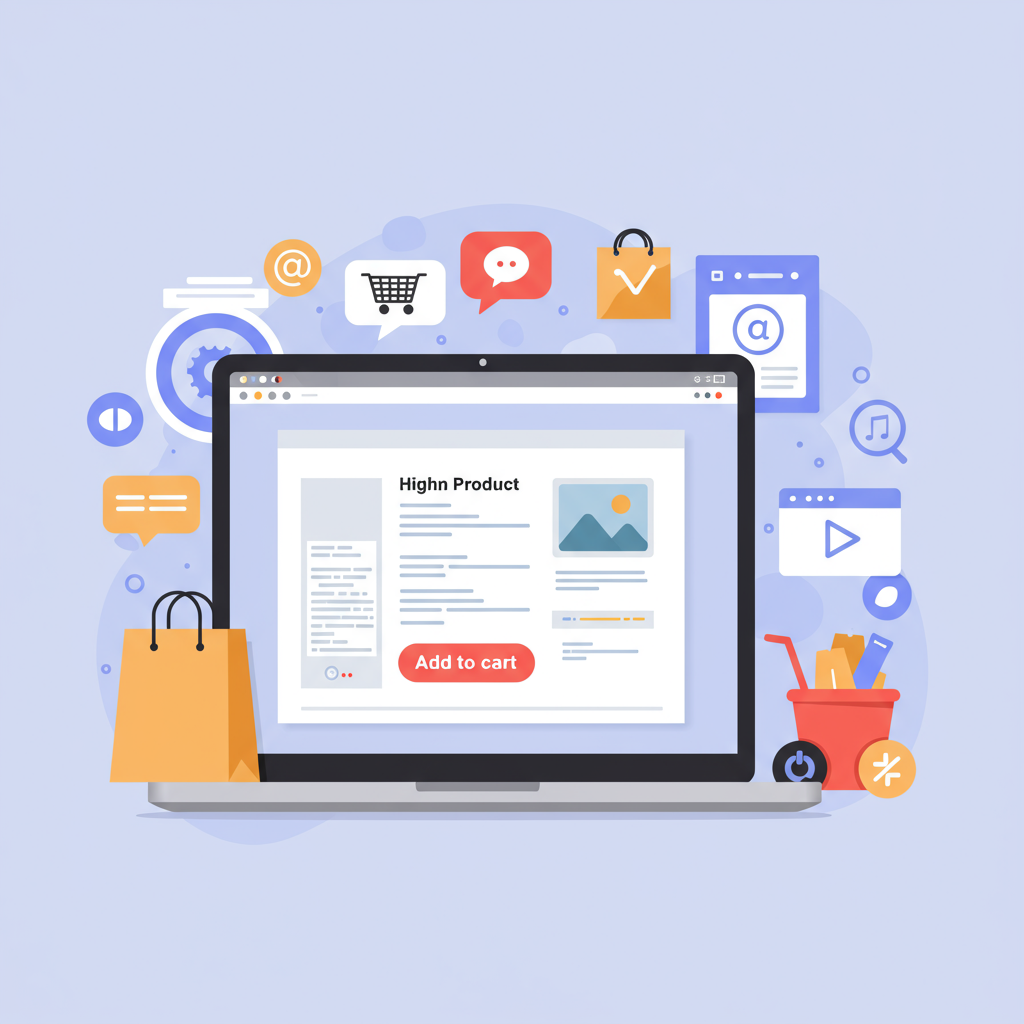Unlock the secrets to converting browsers into buyers with optimized product pages.
Hello fellow Shopify merchants! Today, I want to share some invaluable insights into one of the most critical aspects of running a successful online store: optimizing your product listings. This isn’t just about putting a product online; it’s about crafting an experience that converts browsers into buyers.
When I first started my Shopify journey, I quickly realized that a great product alone isn’t enough. How you present it makes all the difference. Your product page is your digital storefront, your sales pitch, and your customer service all rolled into one.
My first piece of advice, and perhaps the most visually impactful, revolves around **high-quality product photography**. This is non-negotiable. Customers can’t touch or feel your products online, so your images must do the heavy lifting.
I always recommend using professional-grade photos. Think about multiple angles, close-ups of textures or unique features, and lifestyle shots that show the product in use. This helps customers visualize themselves with your item.
Don’t forget about consistent lighting and a clean background. A cluttered or poorly lit image can instantly deter a potential buyer, making your product look less appealing, regardless of its actual quality.
Next up, let’s talk about **compelling product descriptions**. This is where you tell your product’s story and highlight its unique selling propositions. Avoid generic, bland text.
I structure my descriptions to first grab attention with a benefit-driven headline, then delve into features, and finally, explain how those features translate into benefits for the customer. What problem does your product solve? How will it improve their life?
Remember to incorporate relevant keywords naturally within your descriptions. This isn’t just for SEO; it also helps customers find exactly what they’re looking for when they search your store.
Speaking of SEO, **optimizing for search engines** is paramount. Beyond keywords in descriptions, pay attention to your product titles, meta descriptions, and image alt text.
Your product title should be clear, concise, and include your primary keyword. The meta description is your chance to entice searchers to click on your listing from the search results page.
I always make sure my image alt text describes the image accurately and includes relevant keywords. This helps search engines understand your images and improves accessibility for visually impaired users.
**Accurate and comprehensive product variants** are another area I focus on. If your product comes in different sizes, colors, or materials, ensure all options are clearly listed and correctly linked to their respective images and prices.
Nothing frustrates a customer more than finding a product they love, only to discover their preferred variant isn’t available or clearly displayed. I use Shopify’s variant options extensively to manage this seamlessly.
**Pricing strategy** is also crucial. While you want to be competitive, don’t just race to the bottom. I price my products based on perceived value, production costs, and market research. Clearly display your price, and if you’re running a sale, show the original price alongside the discounted one.
**Inventory management** goes hand-in-hand with product listings. I always ensure my stock levels are accurate on Shopify. Selling an out-of-stock item leads to cancellations and unhappy customers, which can damage your brand reputation.
**Leveraging customer reviews and social proof** is incredibly powerful. I actively encourage customers to leave reviews after purchase. Positive reviews build trust and provide authentic validation for your products.
Displaying star ratings and customer testimonials prominently on your product pages can significantly boost conversion rates. I’ve seen firsthand how a few good reviews can tip the scales for a hesitant buyer.
A **clear call to action (CTA)** is essential. Once a customer is convinced, make it easy for them to take the next step. “Add to Cart,” “Buy Now,” or “Shop Now” buttons should be prominent and easy to find.
I also pay close attention to **mobile optimization**. A significant portion of online shopping happens on mobile devices. Your product pages must load quickly and look great on any screen size. Shopify themes are generally responsive, but it’s always worth testing.
**Transparent shipping and return policies** are vital for building trust. I make sure these policies are easily accessible from every product page, often linking to dedicated policy pages. Clear information reduces customer anxiety and potential support queries.
**Effective product categorization and tagging** help customers navigate your store. I organize my products into logical collections and use descriptive tags. This improves user experience and helps customers discover related items.
Consider **upselling and cross-selling opportunities**. On your product pages, suggest complementary products or higher-value alternatives. Shopify’s built-in features or apps can help automate this, increasing your average order value.
Finally, **regularly update and maintain your listings**. Product information can become outdated, images might need refreshing, or new features might be added. I periodically review my top-performing listings to ensure they are always at their best.
I also believe in **A/B testing** different elements of my product listings – from button colors to description layouts – to see what resonates best with my audience. Small tweaks can lead to significant improvements.
And don’t forget to explore the vast ecosystem of **Shopify apps**. There are apps for everything from advanced product options to review management and SEO optimization. I’ve found many of them to be game-changers for my store.
So, what do you think about this article? I’d love to hear your thoughts and any best practices you’ve discovered on your own Shopify journey.
Implementing these best practices has been instrumental in my success on Shopify. It’s an ongoing process of refinement, but the effort truly pays off in increased conversions and happier customers.
Remember, every detail on your product page contributes to the overall customer experience. By focusing on quality, clarity, and trust, you’ll be well on your way to building a thriving e-commerce business.






